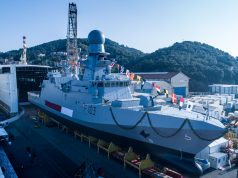The US State Department has approved Qatar’s request to buy the Fixed Site-Low, Slow, Small Unmanned Aircraft System Integrated Defeat System (FS-LIDS) system of systems to counter the unmanned aerial systems (UAS) threat.
The approved package of counter-drone systems has a total estimated value of $1 billion and would see Raytheon, SRC and Northrop Grumman deliver components for the solution, should a definitive agreement be reached.
Qatar has requested to buy ten FS-LIDS system of systems, including 200 Coyote Block 2 interceptors, counter unmanned electronic warfare systems (CUAEWS), Coyote launchers, Ku band Multi-function Radio Frequency System (KuMRFS) radars; Forward Area Air Defense Command and Control (FAAD C2), EO/IR cameras, and other related equipment.
“This proposed sale will support the foreign policy and national security objectives of the United States by helping to improve the security of a friendly country that continues to be an important force for political stability and economic progress in the Middle East,” the US Defense Security Cooperation Agency (DSCA) said in a statement.
Already in US military service, FS-LIDS includes the Forward Area Air Defense Command and Control, counter unmanned aircraft electronic warfare system, electro-optical infrared camera, direction finding sensors, mesh-net Internet Protocol radios, and the AN/TPQ-50 Multi-mission Radar.
For kinetic defeat, FS-LIDS employs a Ku Band Multifunction Radio Frequency System Radar and the Raytheon-built Coyote Block 2 Interceptor.
The LIDS family of systems uses a modular framework to create a mechanism to defeat UAS from the smallest systems to Group 3 unmanned aircraft capable of carrying large explosives or sophisticated observation payloads. These aircraft typically weigh more than 55 pounds, but less than 1,320 pounds and operate below 18,000 feet at speeds of slower than 250 knots.



























